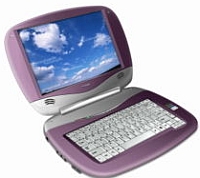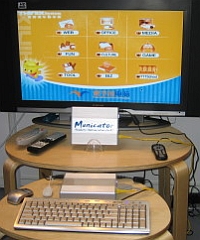While we salivate at the idea of Christmas OLPC XO sales, other countries might not have the same One Laptop Per (Adult) Child dreams as your standard American geek. For example, China, an early OLPC dream gone sour, may still be ambivalent about XO technology if Shanghiist is right.
Starting off with the obvious need for cheap laptop options in a nation of rich coastal province, yet poor hinterlands where two hundred million people earn less than a dollar a day, Mathew Seigal goes on to list a familiar reason behind OLPC resistance:
We're totally behind the charitable aims of Negroponte's project, but we're not sure you can turn children into geniuses just by throwing computer equipment at them. If that was the case then UK state-run schools would be teaming with little Einsteins. The UK spent billions on IT investment before they started to realise that they had to retrain teachers and reinvent learning methods.He then goes on to list the many options that Chinese parents (and kids at heart) have in the affordable computing space. Options like:
Yellow Sheep River's MunicatorAs of this weekend, there is yet another cheap laptop competitor in the Chinese market - none other than Lenovo, arguably the original cheap Chinese PC computer manufacturer. The New York Times reports:
Why should China rely on American do gooders when they can build their own cheap laptops? Yellow Sheep River has come up with a spec for a $150 Chinese Linux laptop with a 40 GB hard drive. It has Chinese Godson chips that offer similar performance to Pentium III chips that were around in the late nineties. This device also plugs into televisions. Read more here.Dream Dragon
We don't know much about this product except what we read on this website: The "Dream Dragon" computer, being developed as a joint venture by the Jiangsu Menglan Group and China's Institute of Computing Technology (ICT), is currently set to cost about US$131. It utilizes a line of low cost central processing units (CPUs) named "Loongson" being developed by the ICT and the Chinese Academy of Sciences. Like the Classmate and XO-1, it runs on Linux, though it is aimed at low income and rural Chinese students. See: this Speroforum post.Sinomanic
Sinomanic is a Chinese branded laptop that will go on the market for $129 to $392.
Lenovo Group Ltd. said Friday it will sell a basic personal computer aimed at China's vast but poor rural market and priced as low as $199.So if China is awash in low-cost laptop options, is there room for an OLPC XO or even Intel's Classmate PC? After almost a year of living in China, I think so. For as Mathew concludes:Lenovo's announcement follows rival Dell Inc.'s bid to boost its presence in China's booming market with the unveiling in March of a low-cost personal computer meant for novice Chinese users.
China may have 140 million Internet users, but it's going to take a few years and plenty of low cost initiatives to make communication technologies accessible to everyone in China.And what better communication technology than everyone's favorite "$100 laptop" even is its upwards of $280 per laptop to deploy?




The names alone: yellow sheep river and dream dragon make me want to buy one. A lot cooler than 'xo'
The thing that sets the XO apart is the OLPC program; the way that OLPC is designing software specifically for use by children, making the mesh network viable in giving internet connections to everyone within a couple kilometers, etc.
While these other laptops might be just as cheap, they're actually just gimped home PCs, whereas the XO has utility beyond existing computers due to the nature of the OLPC organization. Of course, without an implementation plan, this is all for naught.
China is indeed 'awash' in low-cost computing options (laptop and otherwise). These are only a few of 'em. It is perhaps notable (given that this is an OLPC-centric message board) that there are multiple low-cost computing efforts in China aimed specifically at (very large) domestic rural and education markets featuring various flavours of Linux.
(OLPC board member Intel is actually involved with at least one of these, the so-called "Chang Feng" Rural Worker's PC -- of course this utilizes a Celeron!)
FYI:
The 'Loongson' (also written 'Longxin', depending on how you choose to transliterate) and 'Godson' mentioned above actually refer to the same (series of) chips, originally developed at the Chinese Academy of Science (these are sometimes billed as the 'Chinese answer to Intel and AMD'). Some observers believe that there are IP-related issues that might surface rather quickly were these things to be exported for use outside of China (whether inside PCs sold commercially ... or perhaps included in developmental aid packages?).
The "Dream Dragon" product mentioned above refers, I think, to what is now marketed as the "Fulong Mini-PC".
(and Steve: I am not sure how this might impact your future purchasing preferences, but 'Godson' is actually a rough approximation of the Chinese for "dog's legacy" -- small surprise that they changed the name!)
Cheers, Mike
I was the one who filmed the Municator at http://cebitvideo.com/?p=20 which got digged and reported everywhere back in March 2006.
Sadly I haven't heard from the company Yellow Sheep River since, so I don't know if they are still working on that MIPS based cheap Linux computer.
Mike, the MIPS non-aligned instruction patents have just expired so now these products could be exported to the USA with no problems.